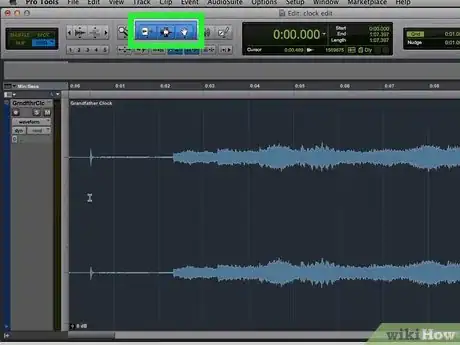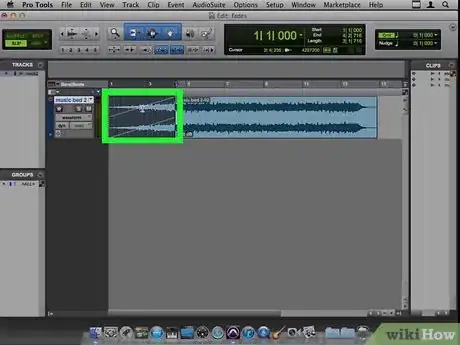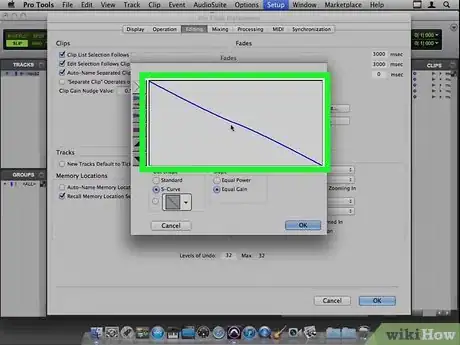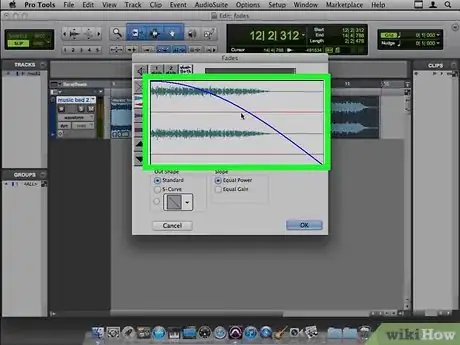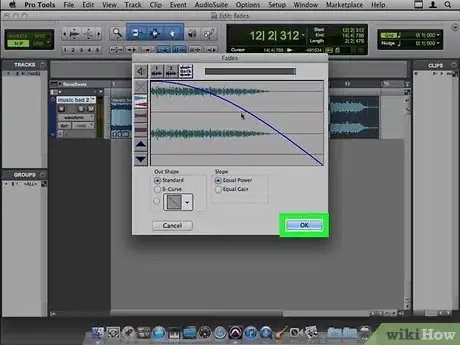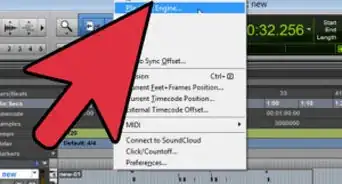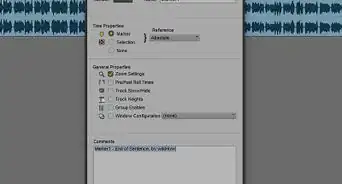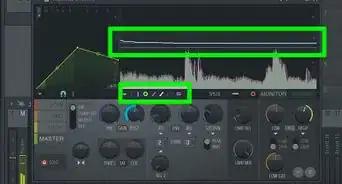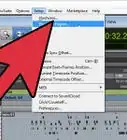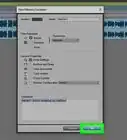This article was co-authored by wikiHow staff writer, Travis Boylls. Travis Boylls is a Technology Writer and Editor for wikiHow. Travis has experience writing technology-related articles, providing software customer service, and in graphic design. He specializes in Windows, macOS, Android, iOS, and Linux platforms. He studied graphic design at Pikes Peak Community College.
This article has been viewed 72,787 times.
Learn more...
Pro Tools is digital audio software made by Avid Technology that can be used on either the Macintosh or Microsoft Windows operating systems. Professionals in audio industries use Pro Tools for editing and recording in films, television, and music. In Pro Tools, you can use the fade feature to smooth out sudden transitions in your audio files. Fading is generally done at the beginning or at the end of an audio file, or in between two audio files. You can adjust the shape, duration, and position of fades. This wikiHow teaches you how to create a fade-in in Pro Tools.
Steps
-
1Activate the Smart tool. The Smart tool is a 3-in-1 context cursor that consists of the Trim tool, Selector tool, and Grabber tool. The cursor will change depending on where it is placed over an audio clip. To activate the Smart tool, click the bracket around the three main tools in the toolbar at the top, or press F7 and F8 at the same time.[1]
-
2Select the region you want to create a fade for. Click and drag over a section of an audio clip to highlight it. This selects that region. You can select as much of the clip as you need. To create a fade-in, you'll want to highlight the beginning of an audio clip starting on the left side. You can also highlight any blank space in front of the audio clip.
- You can select a region that already has a clip on it. This will overwrite the fade.
- Alternatively, you can create a Fade-out by highlighting the end of a clip or you can highlight the beginning and end of two clips that are touching to create a crossfade. A crossfade will decrease the volume of one clip while increasing the volume of the other. This creates a smooth transition between two clips.
Advertisement -
3Press Ctrl+F or ⌘ Command+F to open the Fades dialog box. The Fades dialog box allows you to control the shape and slope of a fade.
- Alternatively, you can click the Edit menu at the top and highlight Fades. Click Create under the Fades sub-menu.
-
4Select the shade of the fade you want to use. Click the radio option next to "Standard" or "S-Curve." The "Standard" setting is a general-purpose fade whereas the S-Curve setting allows for a faster fade-in. You may also select a custom curve by clicking on the arrows next to the curve diagram to display a drop-down menu.
-
5Modify the shape of the fade. You can modify the shape of the fade by clicking and dragging the line in the display at the top of the Fade dialog box. Alternatively, you can click the radio option next to the drop-down menu at the bottom and select a line curve from the drop-down menu. A straight diagonal line will create a steady increase in volume. A curved line will create a gradual increase in volume.
- If you are creating a crossfade between two clips, select "Equal Power" if the two clips have a different sound. If the two clips have the same or similar sound (i.g. two microphones on the same sound source), select "Equal Gain" instead.
-
6Test your fade. To hear the effects of the fade you created, click on the "Audition" button in the top, left-hand corner of the Fades window. It's the button that resembles a speaker.
-
7Edit your fade if needed. If you need to edit your fade, you can adjust the curve by dragging it to a new location or by selecting a different fade shape from the In-Shape or Out-Shapes settings section.
- You can click and drag the edge of a fade over an audio clip using the Trim (or Smart tool) to adjust the duration of a fade.
-
8Click Ok to create your fade. It's in the lower-right corner. Pro Tools will then calculate the fade and add the selected fade curve to your region.
- If you need to delete a fade, simply click it using the Grabber tool and press the Delete key. This will delete the fade without deleting the underlying audio.[2]
References
About This Article
1, Press F7 and F8 to activate the Smart tool.
2. Highlight the section of an audio clip you want to create a fade for.
3. Press Ctrl + F or Command + F to open the Fades dialog box.
4. Select "Standard" or "S-Curve."
5. Drag the line to adjust the shape of the curve or select a curve shape from the drop-down menu.
6. Click Ok.
